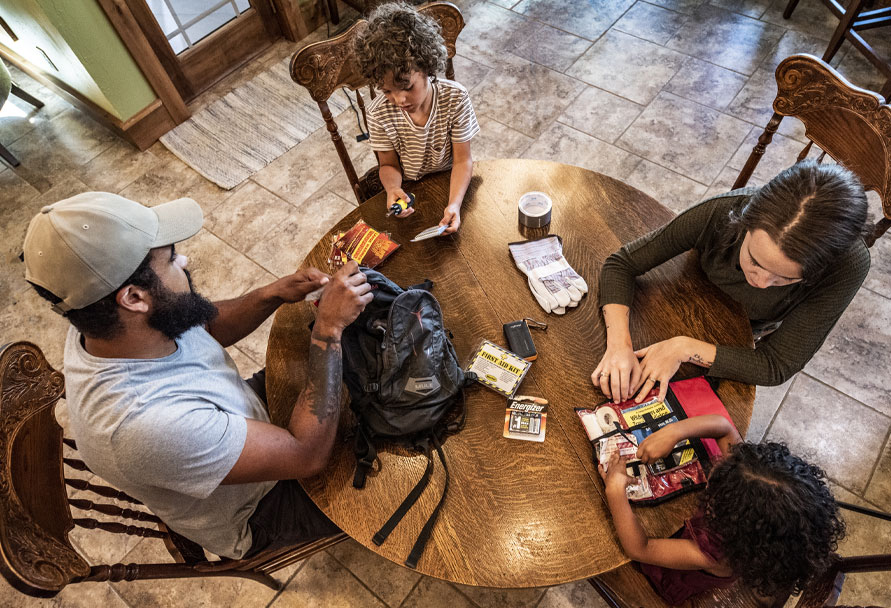Be prepared – Make a plan

Emergencies come in all forms. Whether a forest fire threatens your home, you smell natural gas, or a weather event has caused extensive damage, emergencies can leave us feeling unprepared. There’s one way to feel a little more in control in these situations — have a plan.
When disaster strikes, you may not always be with your family. So, it’s important to have an emergency plan in place – where will you meet, how will you communicate, what should you do in specific emergency situations? A plan helps you and your family weather an emergency situation with more control.
Creating a family emergency preparedness plan
A family emergency plan doesn’t have to be overly complicated, but it should include some critical pieces of information:
- How will your family get out of the home? When every second counts, your family needs to know how best to evacuate the home. Decide the safest way to exit and ensure everyone knows it. Include alternatives in case your planned route is blocked or inaccessible.
- Practice your emergency evacuation route. This is especially important with younger children.
- Plan for evacuation routes out of your neighborhood or area.
- Decide where you will meet. Pick a location that’s familiar and easy to find. You might choose two meeting spots – one close to your home and one farther away for larger emergencies.
- Plan for a safe place to stay. In the case you can’t return to your home, it’s a good idea to have a safe location where your family can stay. Maybe it’s at a relatives or close friends, but having a location chosen ahead of time will be one less thing to worry about during an emergency.
- Compile a list of shelters to have on hand. If you don’t have family or friends where you can stay in case of an emergency.
- Plan for your pets. Decide ahead of time what you will do with your pets. If you will need to board them, ensure that the needed paperwork is handy.
- Stay in the know. Include in your plan the best way to get information in case of a community emergency. Is it a radio station? Does your local emergency management office use social media to share messages?
- How will your family communicate if separated? What are the alternatives if phone lines are down or cell towers are compromised?
- Compile a list of agencies and phone numbers that you might need in an emergency. Maybe it’s the Red Cross or local nonprofits that help in emergency situations. Having these numbers in one place saves time and energy.
- Pack an emergency kit that can be easily carried. From a flashlight to extra food, the contents of an emergency kit will come in handy during any emergency. We’ve compiled a list to help you create your kit. And remember, always make sure your kit is portable and easy to carry.
- Share your emergency plan with family and friends so that they know where you will be and how they can help.
We hope you’ll never have to deal with an emergency that requires you to evacuate your home, but if you do, we know you’ll be prepared with this comprehensive list. We’ve also put together an extensive resource center to help.